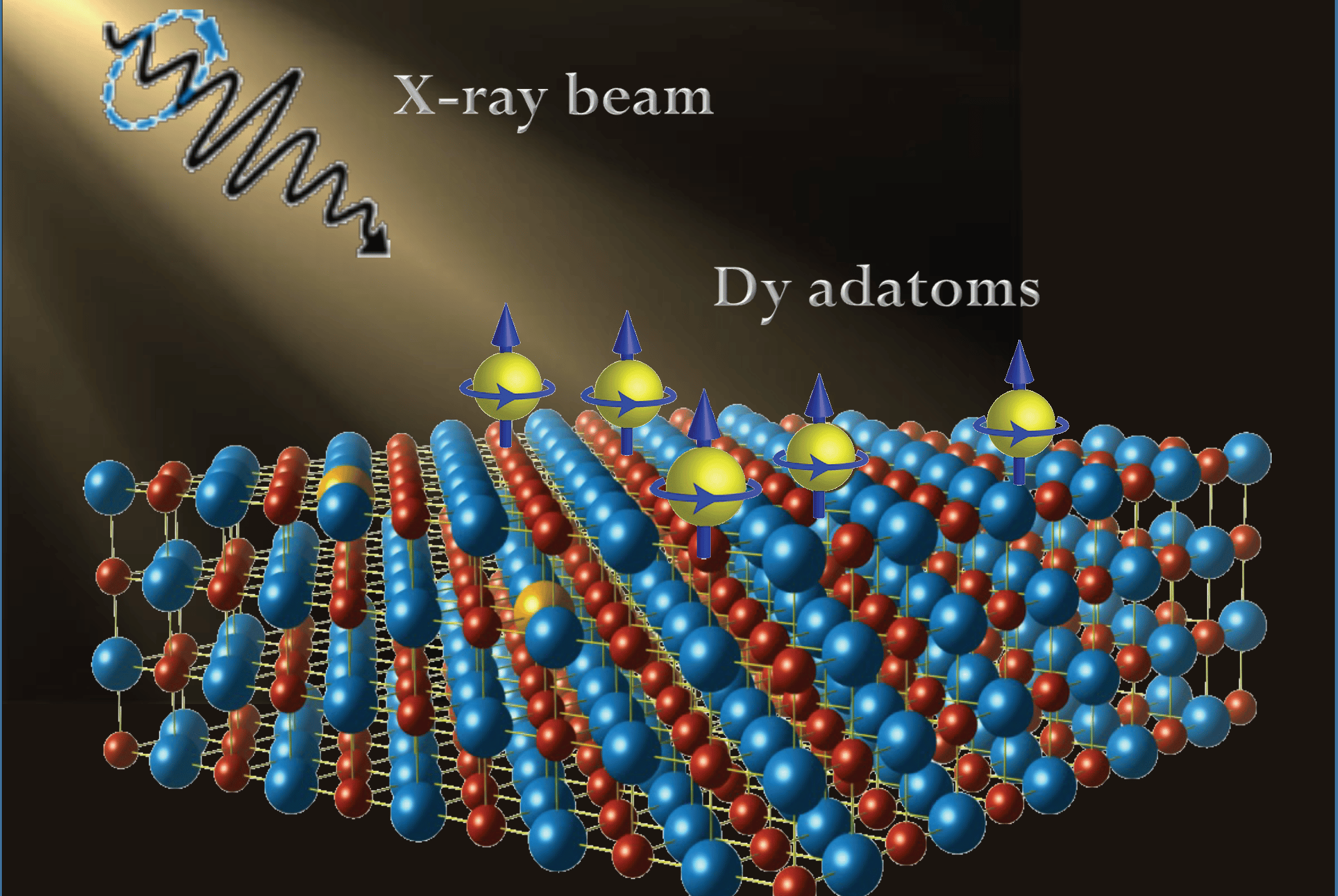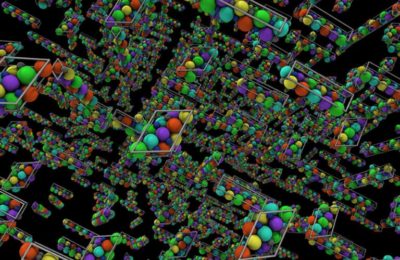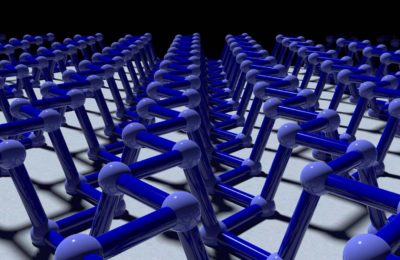For a few years the magnetic properties of rare-earth atoms deposited on crystal surfaces have been investigated in order to exploit them for the development of new magnetic storage technologies. Now a team led by researchers from Istituto nanoscienze (Cnr Nano) and Istituto di struttura della materia (Cnr ISM) reports on dysprosium atoms adsorbed on strontium titanate crystals and demonstrates they can host magnetic bits of information, also discovering an electronic modification useful to manipulate this type of information. The research, carried out by Alessandro Barla (Cnr ISM) and Valerio Bellini (Cnr Nano) in collaboration with Ecole Polytechnique Fédérale de Lausanne, Catalan Institute of Nanoscience and Nanotechnology (ICN2), ETH Zurich, Czech Academy of Sciences is published in ACS Nano.
Besides showing that dysprosium atoms behave as stable single magnets, the new dysprosium-titanate system is characterized by a particular configuration of the electrons on the crystals surface, as told by Valerio Bellini, first author of the paper: “Contrary to previously reported cases, here the dysprosium bits are coupled through magnetic exchange to the titanium atoms at the surface of their support. This leads to the appearance of a spin-polarized two-dimensional electron gas that could be exploited to read or write the magnetic bits thanks to its sensitivity to optical and electrical stimuli”.
In previous studies, systems based on holmium or dysprosium adsorbed on magnesium oxide or graphene had shown only negligible interaction between the magnetic bits and their support. “Now the flexibility of the titanate in our system opens up different possibilities to manipulate the magnetic bits”, continues Alessandro Barla, “This could be done either by interacting with the two-dimensional electron gas at the titanate surface, then controlling the bits through optical or electrical pulses, or by exploiting its paraelectricity and piezoelectricity, i.e. controlling the bits through strain”.
These results have been possible by an experimental approach combined and complemented by atomic multiplet simulations and first principles calculations based on the density functional theory. In particular, Cnr Nano researchers have contributed to determine the adsorption geometry and unveil the presence of the two-dimensional electron gas in the substrate by means of density-functional theory calculations, carried out with the help of the supercomputing facilities of CINECA.
The research on rare-earth single atom magnets is just at the beginning and the next steps will be focused on obtaining more stable structures, by encapsulating the atoms directly within crystal surfaces, and on the investigation of the various bit control options. The aim is to realize innovative magnetic technologies with very increased storage capacity. “The possibility to shrink the size of the magnetic bit towards the atomic level will lead to a breakthrough in the magnetic recording paradigm, and it will permit to increase tremendously the areal bit density of several orders of magnitude”, researchers conclude.
Valerio Bellini, Stefano Rusponi, Jindřich Kolorenč, Sanjoy K. Mahatha, Miguel Angel Valbuena, Luca Persichetti, Marina Pivetta, Boris V. Sorokin, Darius Merk, Sébastien Reynaud, Dante Sblendorio, Sebastian Stepanow, Corneliu Nistor, Pierluigi Gargiani, Davide Betto, Aitor Mugarza, Pietro Gambardella, Harald Brune, Carlo Carbone, and Alessandro Barla, Slow Magnetic Relaxation of Dy Adatoms with In-Plane Magnetic Anisotropy on a Two-Dimensional Electron Gas, ACS Nano (2022). https://doi.org/10.1021/acsnano.2c04048



